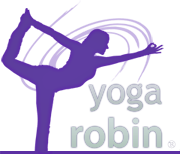Breath and meditation
Breathing brings me back to myself. It is the core of yoga. It is the way to stay present with my body, with my own intimate experience, and it is also the only way I can clear out my body's need to move and my mind's overthinking, to allow me to effectively meditate.
Breathing like a heartbeat
Breathing—smooth, even inhales and exhales through the nose, letting the breath move up and down through the back of the throat—is a necessary and inherent part of my Ashtanga yoga practice.
Being in the Mysore room, the breath of the group is louder than the music and there is no teacher voice leading. The breathing takes over the experience. It becomes like a heartbeat or like the metronome used in music. Ashtanga yoga breathing is called Ujjayi breath.
Full inhale, full exhale
The goal of yoga is to be at peace and grounded all day in life, not just in yoga. It's to train my body to breathe and be calm in any of life's situations. It's easy to breathe during yoga.
Often times during the day at home I'll check in with my breathing, especially if I'm agitated and realize I’m not really exhaling fully. I notice that I typically do quick sharp inhales and small exhales (enough to stay alive). Once I’m cognizant of this, I return to my soothing, even breath—grounding each inhale from the top of the head with a full exhale down to the base of my spine.
 breathing,
breathing,  meditation,
meditation,  ujjayi breath
ujjayi breath 